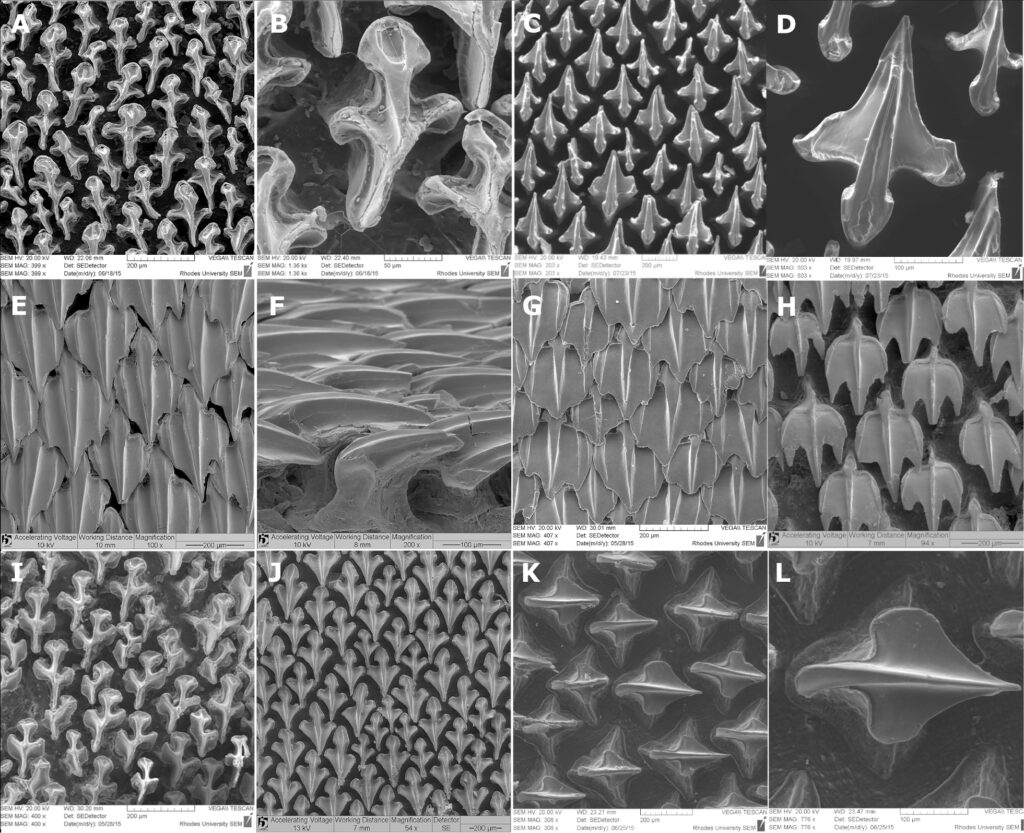For centuries, scientists have taken inspiration from nature and the vast amount of species. Since the ocean is very unexplored, scientists and engineers are constantly discovering and manufacturing new marine animal inspired inventions. This is something called biomimicry; the word is exactly how it sounds, mimicking biological characteristics of nature in order to solve problems we experience as humans. This is seen a lot in the medical industry specifically with shark skin.
Sharks skin is made up of teeth-like scales called dermal denticles, this specific pattern, on a microscopic level, is inhospitable for bacterial growth making their skin extremely clean. Think about it, have you ever seen a shark covered in algae? No, they’re usually pretty clean compared to whales and other large marine animals. The concept of large marine animals being covered in barnacles, algae, and other marine material is called fouling. The presence of dermal denticles in sharks is how they are able to avoid fouling and remain extremely clean.

Viana STFL, Carvalho MR (2020) Squalus shiraii sp. nov. (Squaliformes, Squalidae), a new species of dogfish shark from Japan with regional nominal species revisited. Zoosystematics and Evolution 96(2): 275-311. https://doi.org/10.3897/zse.96.51962
You may be asking yourself, what does this have to do with the medical industry? Well, the catheter is a thin tube used to either drain or deliver fluids to the body commonly used during medical procedures and care. Unfortunately it can often spread infection because of improper sterilization. This is one of the many medical tools that is basically impossible to completely sterilize because of the pattern of material it is made out of. The microscopic surface of many medical tools is very flat and makes it very easy for bacteria to obtain a strong hold on them. With this information Dr. Anthony Brennan founded his company, Sharklet Technologies Inc. and began designing dermal denticle inspired medical devices. Basically, they mimicked the pattern of dermal denticles and manufactured medical tools made out of this patterned material. This technology is especially important to have because the more infections that pop up, the more antibiotics are created for them. This can turn into an issue because bacteria is always evolving so instead of making more and more antibiotics, we can just eliminate the presence bacteria on medical devices all together.
After extensive testing and human trials, it was proven that the shark patterned medical devices were more sterile because bacteria had a harder time staying attached to the surface. Patients during human trials reported that they actually experienced less pain with the dermal denticle catheters as compared to the standard catheter used. This specific pattern is still being tested and modified but is a very promising new invention. It’s also very versatile, the pattern can be adjusted to fit the needs of certain procedures or practices. For example, this could be used to prevent blood clots and clogging tubes. Meaning not only can it be completely sterile for some occasions but the manufacturing team can also tweak the pattern so that if needed, necessary human cells can flow through the pattern of the device. It’s amazing to think about how humans are able to benefit and problem solve by taking inspiration from the oceans’ perfected strategies.